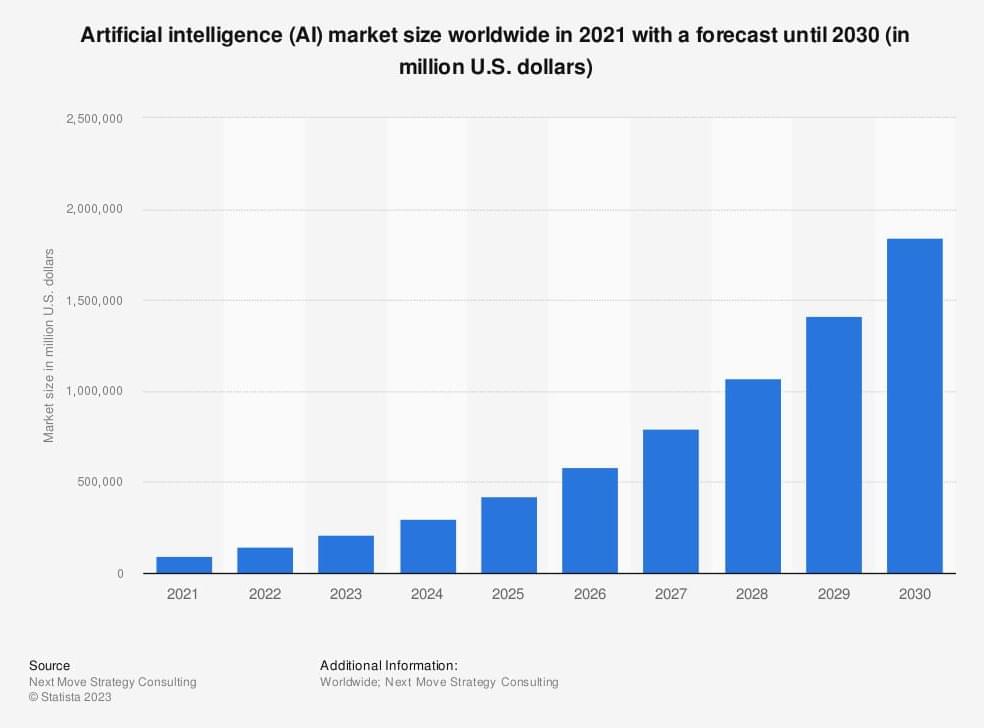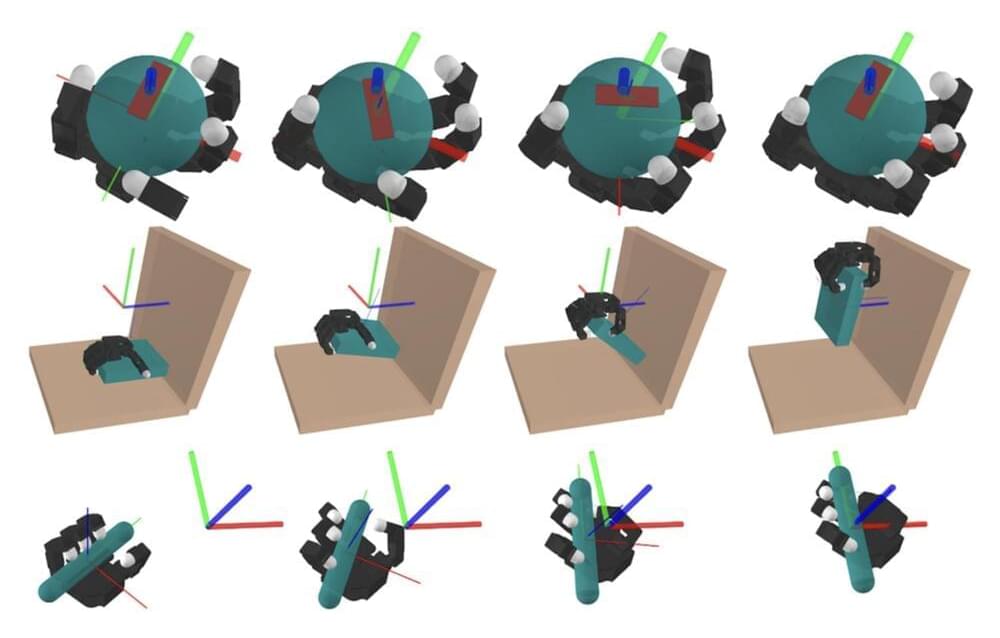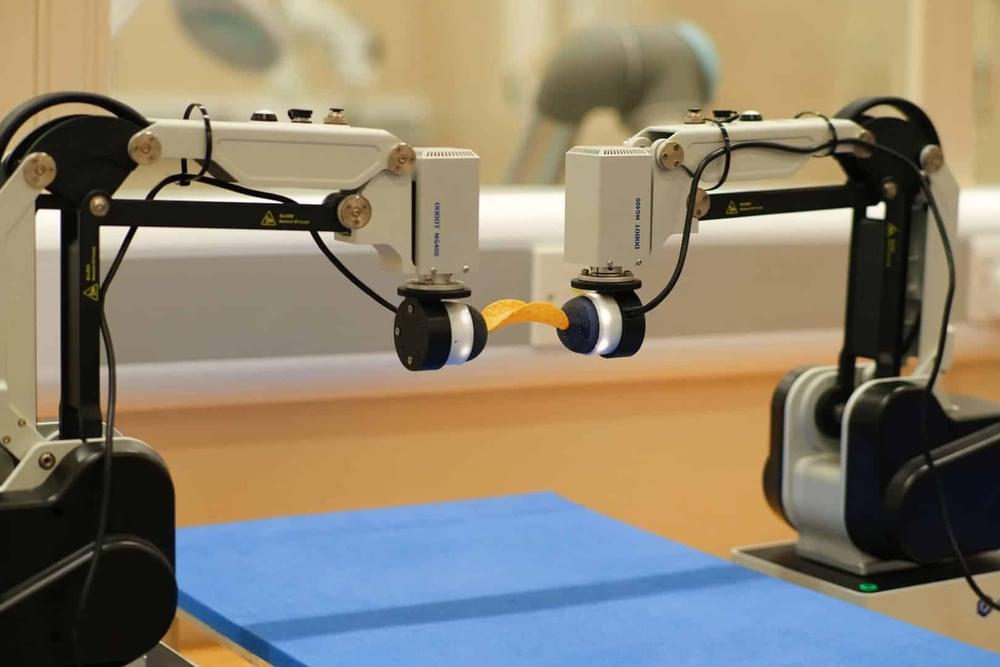The company wants its next-gen Snapdragon chips to use AI for more than just improving camera shots.
Category: robotics/AI – Page 1,041

Tech gets religion on AI: Inside the Vatican summit with Islamic and Jewish leaders, Microsoft and IBM
Artificial intelligence has such a potential for good not only would it make humans closer becoming God like but also it could manifest God through Artificial intelligence that why the ethics of the world depends on its success towards AI for good. It could create peace across the world and a brighter tomorrow.
It’s unusual for tech executives and religious leaders to get together to discuss their shared interests and goals for the future of humanity and the planet. It’s even more extraordinary for the world’s three largest monotheistic religions to be represented.
When the Pope joins the meeting, it’s basically unprecedented.
That’s what happened at Vatican City this week as the Catholic Church hosted leaders of the Jewish and Islamic faiths, new signatories to the Rome Call for AI Ethics, in a meeting that included executives from Microsoft and IBM.


MIT Researchers Developed an Artificial Intelligence (AI) Technique that Enables a Robot to Develop Complex Plans for Manipulating an Object Using its Entire Hand
Whole-body manipulation is a strength of humans but a weakness of robots. The robot interprets each possible contact point between the box and the carrier’s fingers, arms, or torso as a separate contact event. This task becomes difficult to prepare for as soon as one considers the billions of possible contact events. Now, MIT researchers can streamline this technique, called contact-rich manipulation planning. An artificial intelligence approach called smoothing is used to reduce the number of judgments needed to find a good manipulation plan for the robot from the vast number of contact occurrences.
New developments in RL have demonstrated amazing results in manipulating through contact-rich dynamics, something that was previously challenging to achieve using model-based techniques. While these techniques were effective, it has yet to be known why they succeeded while model-based approaches failed. The overarching objective is to grasp and make sense of these factors from a model-based vantage point. Based on these understandings, scientists work to merge RL’s empirical success with the models’ generalizability and efficacy.
The hybrid nature of contact dynamics presents the greatest challenge to planning through touch from a model-based perspective. Since the ensuing dynamics are non-smooth, the Taylor approximation is no longer valid locally, and the linear model built using the gradient quickly breaks down. Since both iterative gradient-based optimization and sampling-based planning use local distance metrics, the local model’s invalidity poses serious difficulties for both. In response to these problems, numerous publications have attempted to take contact modes into account by either listing them or providing examples of them. These planners, who have a model-based understanding of the dynamic modes, often switch between continuous-state planning in the current contact mode and a discrete search for the next mode, leading to trajectories with a few-mode shifts here and there.

How to minimize data risk for generative AI and LLMs in the enterprise
Head over to our on-demand library to view sessions from VB Transform 2023. Register Here
Enterprises have quickly recognized the power of generative AI to uncover new ideas and increase both developer and non-developer productivity. But pushing sensitive and proprietary data into publicly hosted large language models (LLMs) creates significant risks in security, privacy and governance. Businesses need to address these risks before they can start to see any benefit from these powerful new technologies.
As IDC notes, enterprises have legitimate concerns that LLMs may “learn” from their prompts and disclose proprietary information to other businesses that enter similar prompts. Businesses also worry that any sensitive data they share could be stored online and exposed to hackers or accidentally made public.

Dreame Technology Robots Steal Spotlight at the 2023 World Robot Conference
BEIJING, Aug. 24, 2023 /PRNewswire/ — On August 22, the 2023 World Robot Conference (WRC), which was held in Beijing with the theme of “Spurring Innovation for the Future,” came to a big success. The 2023 World Robotics Expo and the 2023 World Robot Contest took place at the same time, bringing together about 160 robotics companies and scientific research institutions from around the globe, and showcasing close to 600 advanced technologies and products, over 320 representatives from international organizations, academicians, renowned experts, and entrepreneurs at home and abroad have been invited to attend.
As a general robotics company, Dreame Technology took center stage for the first time at the World Robot Conference. It unveiled a wide range of robots, including general-purpose humanoid robots, consumer-grade bionic quadruped robots, industrial-grade quadruped robots, wireless Robotic Pool Cleaner, commercial food delivery robots and floor-cleaning robots. This range highlighted Dreame’s broad competitiveness across the fields of R&D for robotic ecosystems and technologies, supply chains, production and manufacturing, talent development, and commercialization.
The Dawn of Superintelligence — Nick Bostrom on ASI
Dive into the cosmic intersection of human cognition and machine intelligence as we explore the paradigm-shifting rise of Artificial General Intelligence (AGI) and its potential evolution into Artificial Superintelligence (ASI). Using astrophysicist Neil deGrasse Tyson’s hypothesis of an alien encounter, we unpack the profound cognitive chasm between beings. How does a Bonobo’s linguistic prowess compare to a human intellectual titan? And as we’ve witnessed the evolution of ChatGPT from its first iteration to ChatGPT-4, are we brushing the fringes of true AGI? Philosophers like Bostrom speculate on a potential “intelligence explosion” when AI begins to improve itself. As we stand at the dawn of a new era, where machines might eclipse human intellect, we ponder our place in the vast intelligence tapestry. Beyond the philosophical, the practical implications are vast: from power dynamics to potential harm if AI goals misalign with ours. Yet, amidst these uncertainties, there’s optimism. This journey offers a profound insight into the most consequential technological evolution in our history and the pivotal choices we must make.
#artificialintelligence #ai #science
This new technology could change AI (and us)
Organoid intelligence is an emerging field in computing and artificial intelligence.
Earlier this year, an Australian startup Cortical Labs developed a cybernetic system made from human brain cells. They called it DishBrain and taught it to play Pong.
The roots of this exciting technology go back 60 years. But while it’s still novel today, it’s already superior to conventional deep-learning AI in several aspects. However, it also poses new ethical and existential risks to humanity.
Watch the video to explore how Organoid Intelligence might evolve over the next few decades and how it could fit into our lives.
===
You can find me on TikTok for short and punchy stories about emerging tech: https://www.tiktok.com/@_futureflux.
===
Jan Leike on OpenAI’s massive push to make superintelligence safe in 4 years or less
The 80,000 Hours Podcast features unusually in-depth conversations about the world’s most pressing problems and what you can do to solve them. Learn more, read the summary and find the full transcript on the 80,000 Hours website: https://80000hours.org/podcast/episodes/jan-leike-superalignment.
In July, OpenAI announced a new team and project: Superalignment. The goal is to figure out how to make superintelligent AI systems aligned and safe to use within four years, and the lab is putting a massive 20% of its computational resources behind the effort.
Today’s guest, Jan Leike, is Head of Alignment at OpenAI and will be co-leading the project. As OpenAI puts it, “…the vast power of superintelligence could be very dangerous, and lead to the disempowerment of humanity or even human extinction. … Currently, we don’t have a solution for steering or controlling a potentially superintelligent AI, and preventing it from going rogue.”
Given that OpenAI is in the business of developing superintelligent AI, it sees that as a scary problem that urgently has to be fixed. So it’s not just throwing compute at the problem — it’s also hiring dozens of scientists and engineers to build out the Superalignment team.
Plenty of people are pessimistic that this can be done at all, let alone in four years. But Jan is guardedly optimistic. As he explains:
Honestly, it really feels like we have a real angle of attack on the problem that we can actually iterate on… and I think it’s pretty likely going to work, actually. And that’s really, really wild, and it’s really exciting. It’s like we have this hard problem that we’ve been talking about for years and years and years, and now we have a real shot at actually solving it. And that’d be so good if we did.